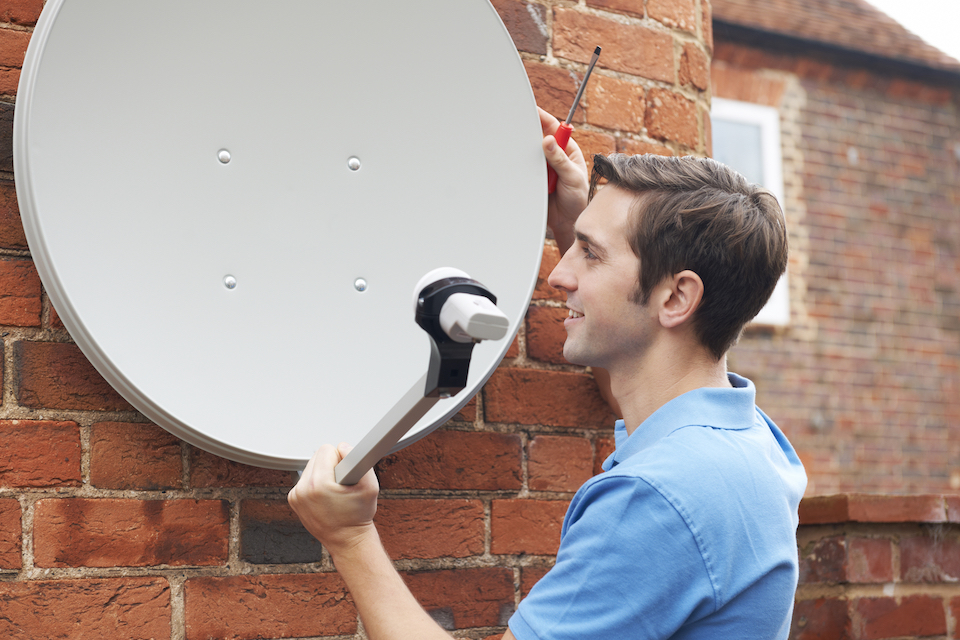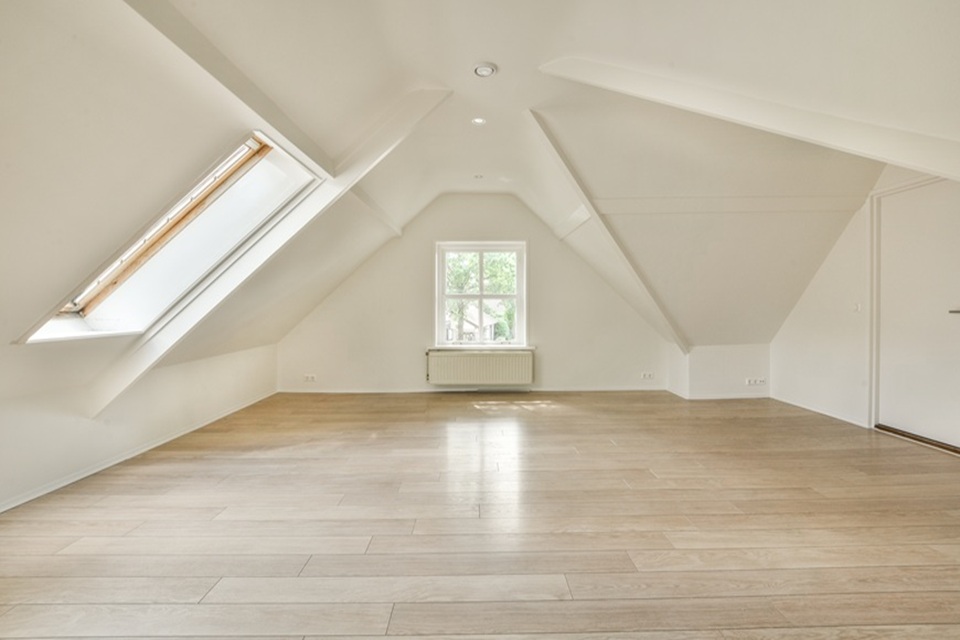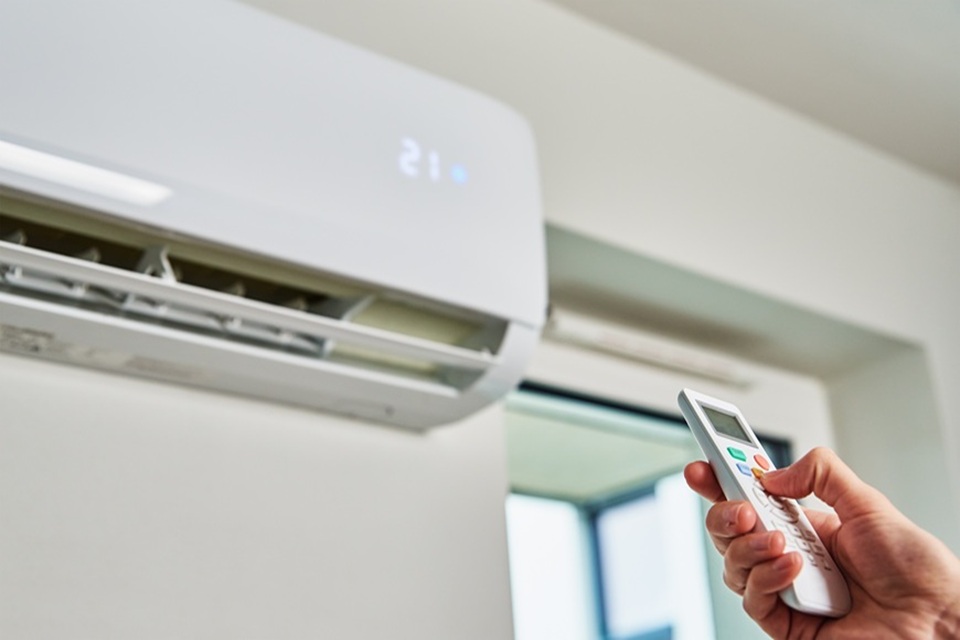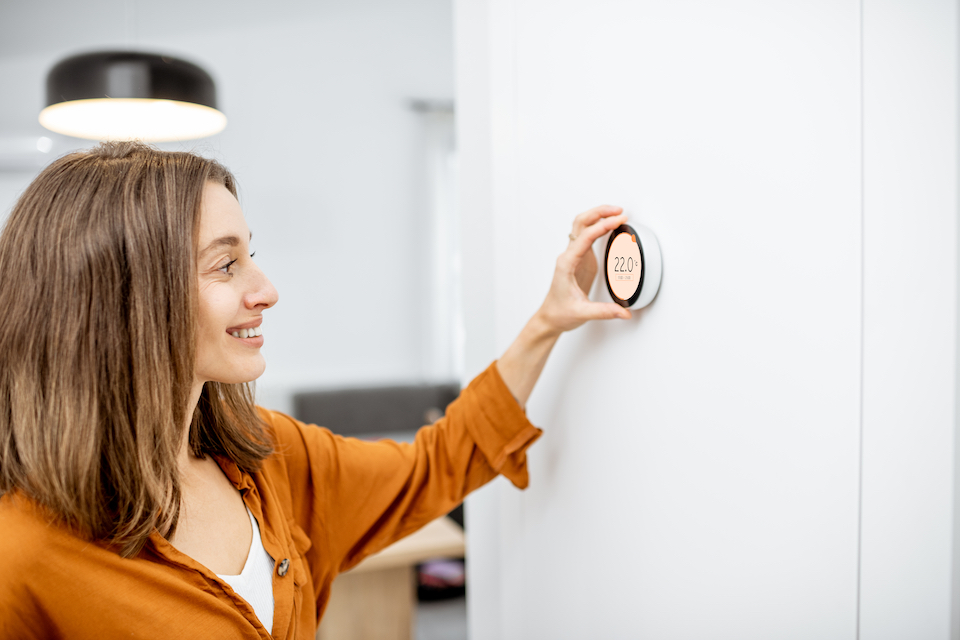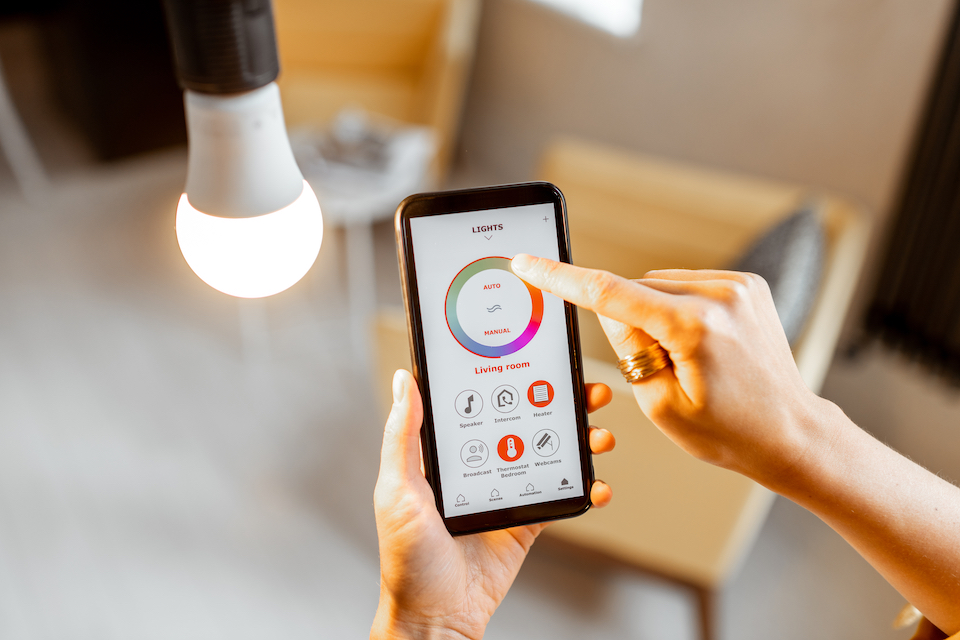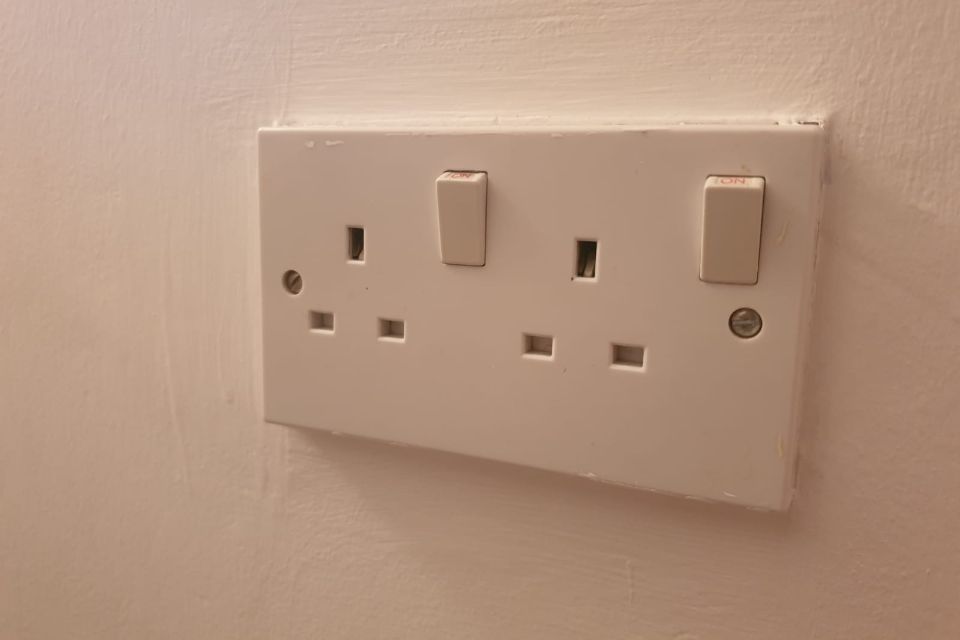How Much is a Satellite Dish?
Although predicting the exact cost to install a satellite dish can be difficult, there are a few variables that all contractors will use to determine localised pricing.
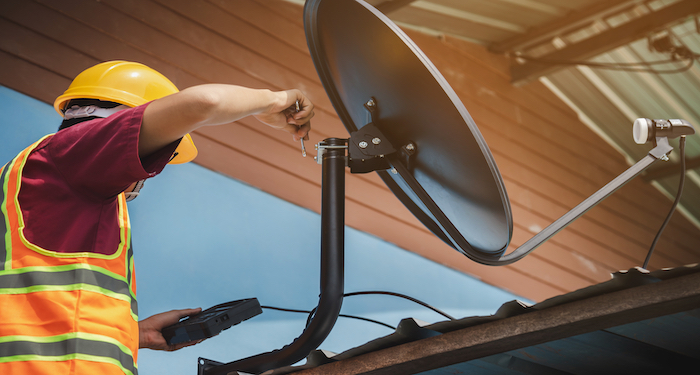
This section will go over the various costs associated with installing a satellite dish and the factors that influence them. The overall cost of installing a satellite dish in your location will be determined by several factors, including:
Installation
Your installer will determine the best location for reception on your roof and then securely mount the dish. Then they'll run the cable between both the tuner and the dish, waterproofing the connection in which it exits your house.
They will test the connection, make sure everything is working properly, and clean up after the installation.
How Many Screens Do You Have in Your Home?
What kind of A/V system do you have in your house? Placing a dish to serve a single television will be less expensive than installing a dish to serve multiple televisions in a single home.
The Situation on Your Roof
Hiring a reputable professional means you won't have to risk your neck trying to climb onto your roof for a satellite dish setup, but even experts will charge more for a steep or high roof.
If moving around up there requires special equipment, such as harnessing, expect an additional charge from your installer.
Bundled Packaging
If they install it for free, you'll save a lot of money, so ask around.
Freeview Signal
Your fitter will ensure that you receive good reception as part of its overall TV aerial installation. Some areas, however, have a stronger signal than others.
If the signal is strong enough, the transmitter can be fitted at gutter level or within the loft, saving money. In areas with poor signal, the antenna must be raised, and an amplifier could well be required, raising the cost.
So how much does a satellite dish cost?
The average cost of a TV aerial installation is between £200 and £300. This is based on a two-story property that requires less than 20m of wiring and has the cables running on the building's exterior.
Internal wiring is likely to cost significantly more because of the greater difficulty level involved and the increased installation time.
It is common practice to add new TV points all through your home when installing a new antenna. This, however, will raise the total cost of the project.
If you are a skilled do-it-yourself, you may want to do the installation yourself to save money.
Because many installations take place at a height, it is critical to use safety precautions to avoid accidents and injuries. Normally, a standard dish setup with two feeds to your box, allowing you to record one channel while watching another, costs £150 - £250.
The cost of installing a satellite dish with a single tv broadcast for basic Freesat boxes that do not record is typical £150 - £200.
If you have a dish and just want to run cables to some other room, this normally costs £75 - £100. Prices may vary depending on the layout of your property and the location of your TV because third parties provide installations.
If you're looking to install a new TV aerial or satellite dish, you've probably heard of Freesat and Freeview. But what exactly are satellite dishes, and which one is best for you?
They both are free television services, as their names imply. The most common service is Freeview, which requires a TV aerial to receive a signal. Homeowners will need a small satellite dish to receive the Freesat signal.
While the television services are free, you will need to use a satellite dish or a roof antenna to receive the signal.
Satellite dishes are usually less expensive to install than TV aerials, but they do require additional components to access the signal, including a set-top box, which raises the overall cost of a dish.
A Freeview TV aerial installation will cost around £250, and a Freesat satellite installation will cost around £140.
Satellite Dish Installation Prices
The table below will give a breakdown of the cost to install a satellite dish:
| Job | Cost |
|---|---|
| TV aerial installation | £200 - £300 |
| A standard dish setup | £150 - £250 |
| Installing a dish with a single tv broadcast - basic Freesat boxes that do not record | £150 - £200 |
| Dish and run cables to other room | £75 - £100 |
| A Freeview TV aerial installation | £250 |
- How Much is a Satellite Dish?
- What are the Supply Costs for a Satellite Dish?
- What are the Additional Costs of Installing a Satellite Dish?
- Tradesmen Costs for a Satellite Dish Installation
- How Long Does It Take to Install a Satellite Dish?
- Types of Satellite Dishes
- How Much Does It Cost to Remove a Satellite Dish?
- FAQs
- Sources
What are the Supply Costs for a Satellite Dish?
If you have Dish, AT&T, or cable and want to get satellite service for your home, you shouldn't need to hire a professional installer.
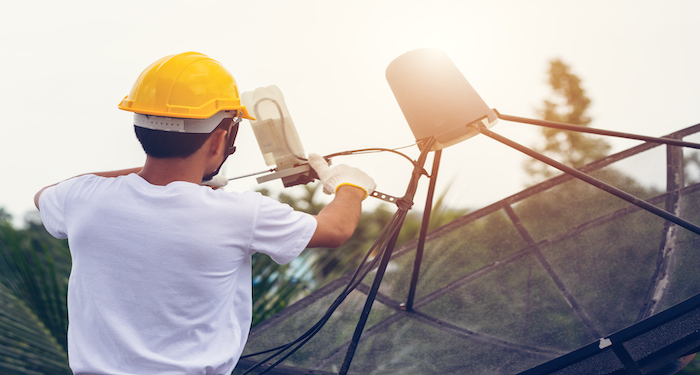
You can install a satellite dish even if you may not have much construction experience. Once you've determined the best location for your dish, secure it in place.
By pointing the dish up to the Sky, you can receive a satellite signal. You can then transmit the signal to a recipient and your TV using proper wiring.
Here, we will go over the various supplies that you will need for the job, as well as their costs, so that if you decide to DIY the project, you will know what to buy.
Hold the dish's mount up to your house and mark the screw positions; the mount should cost between £12 and £40. The dish is held up by an L-shaped rod with a base plate that attaches to your house.
If you're mounting the satellite on the side of your house, make sure the holes line up with a wall stud or another strong structure. It will not hold if you try to anchor it to the siding.
To break through stone and other rigid surfaces without damaging your drill, use a masonry drill bit, which will cost between £20 and £40.
Screws will cost between £6 and £7. Install the plugs into the wall using a hammer (£9 - £30) and a chisel (£7 - £13).
Apply the tip of a chisel to one of the bolts. Push the bolt into the wall with a couple of good whacks on the chisel's handle. Hammer the bolt until it is flush with the wall.
Attach the antenna bracket, which will cost between £15 and £40, to the low noise block (LNB) arm, which will cost between £5 and £30.
The table below will break down the supply costs for a satellite dish:
| Supply | Cost |
|---|---|
| Mount | £12 - £40 |
| Masonry drill | £20 - £40 |
| Screws | £6 - £7 |
| Hammer | £9 - £30 |
| Chisel | £7 - £13 |
| Antenna bracket | £15 - £40 |
| Low noise block arm | £5 - £30 |
What are the Additional Costs of Installing a Satellite Dish?
When installing a satellite dish in your home may result in additional costs that you may decide to have done or small factors that can influence the overall cost. Here we will go over the different additional jobs and their costs.
Roof Repair
The fees will vary according to the type of repair and replacement required. The larger the roof, the higher the cost of maintenance or replacement.
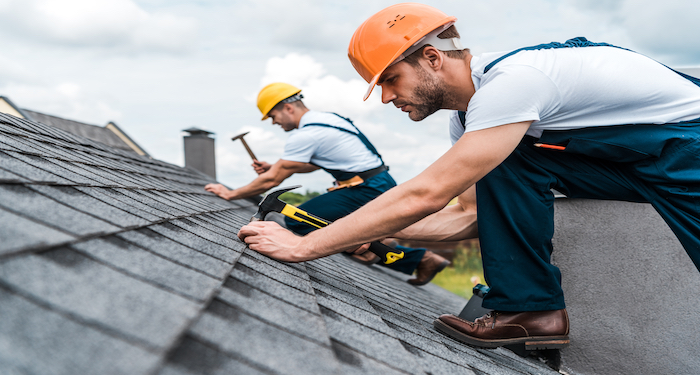
This also applies to the height of your house, as taller structures will necessitate extra scaffolding to assist roofers while they work, raising your access costs.
Roofs with multiple levels or multiple features, like chimney stacks as well as dormer windows, can add time and cost to a project. Water may be entering through a lost or broken roof tile.
In this case, a roofer can substitute cement, clay, or slates for around £350, and can be done quickly, usually within a few hours.
Lead flashing protects the edge of your roof where tiles meet masonries, such as your chimney or skylights.
If this becomes damaged for any reason, it may result in problems such as missing tiles by allowing rain to come into your house—a roof flashing repair costs between £250 and £1,000 per metre of flashing.
Please see our guide on roof repair costs for more information.
Guttering
The total cost of guttering is affected by the material used or the size of the region to be covered.
Semi-detached home with 15 to 20 metres of guttering costs between £600 and £900 in steel, £675 and £900 in aluminium, £675 and £1,000 in uPVC, £1,200 and £1,500 in cast iron, and £540 and £1,100 in copper.
Labour for installing guttering on the house typically costs between £200 and £300. This is the same as the daily average rate charged among most guttering fitters, with gutter installation taking approximately one day.
Please see our guide on guttering costs for more information.
Roof Cleaning
Roof cleaning typically costs between £8 and £12 per m². It will include the labour necessary to finish the work, as well as any necessary equipment and materials, as well as any safety equipment required to access the roof, like scaffolding.
Roof cleaning costs are also determined by the size and type of roof, the number of people performing the work, how easy or hard access to the roof is, and, finally, your location within the UK.
The overall square meterage of a roof will influence the cost of having your roof cleaned. The greater the area to be covered, the longer the work takes, and the more materials will be required.
Please see our guide on roof cleaning costs for more information.
Scaffolding
The price of erecting a scaffold tower ranges between £200 and £300. Scaffolding on three sides of a semi-detached house costs £1,000, while scaffolding on three sides of a detached cottage costs £600 to £700.
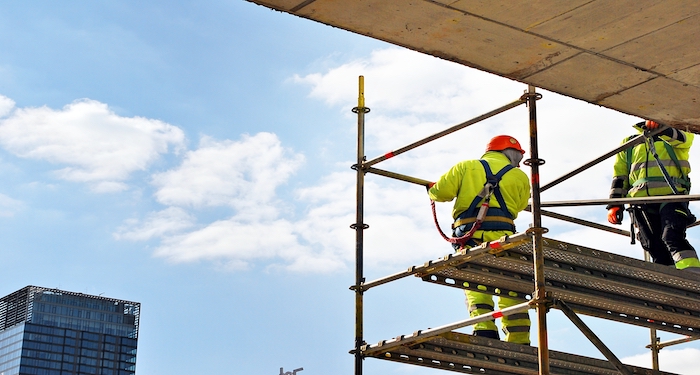
The cost of hiring scaffolding is determined by the type and size of scaffolding, the number of tradespeople involved, the ease of access, and the location of your property.
The duration of the rental determines most of the scaffolding rental fees. The labour costs of putting it up and taking it down, on the other hand, are a significant part of the cost. Let's take a closer look at the labour costs.
The ease of access, the number of tradespeople employed, where you live, and weather conditions can all have an impact on labour costs.
You can also rent scaffolding, which is a good option if you want to save money. The obvious advantage of renting scaffolding is that it is significantly less expensive than purchasing it all at once for any given job.
Purchasing it for the purpose of keeping it will usually cost you at least several thousand pounds. However, if you intend to reuse the scaffolding on a regular basis, it will save you money over the long term.
Keep this in mind when deciding whether to rent or buy scaffolding. If you purchase it, it will degrade over time and will be less strong and durable than renting scaffolding.
Please see our guide on scaffolding hire costs for more information.
Preparation
It is critical to think about any preparation and construction work that may be required for the completion of your TV aerial installation. Will, for example, the old aerial has to be removed?
Signal for Freeview
Your fitter will ensure that you get good reception as part of a good TV aerial installation. Some areas, however, have a stronger signal than others.
If the signal is strong enough, the antenna can be fitted at gutter level or within the loft, which saves money. In areas with poor signal, the antenna must be raised, and an amplifier might well be required, raising the cost.
Aerial/Satellite
As you might expect, not all TV aerials or satellite dishes are the same. There is a large variety to choose from, from basic aerials starting at £15 and greater aerials costing hundreds of pounds.
In most cases, the price of buying an aerial will be between £15 and £50.
Factors Influencing Installation
The price is affected by the height of the installation, the wiring configuration, and the number of TV ports required.
Higher-end installations and those that necessitate the wiring being installed internally (rather than on the building's exterior) will be more expensive. Every additional TV port will raise the price.
Number of Tradespeople
Installing a satellite cost will also vary according to the number of professionals hired. If only one tradesperson is needed to install, the labour cost will be much lower than if two, three, or more labourers are needed.

Duration
The longer it takes to install the satellite, the higher the labour cost. On the other hand, the longer the hiring period, the more you'll pay, with certain homeowners hiring an expert for a few days and others for weeks or even months.
Tradesmen Costs for a Satellite Dish Installation
Accredited engineers install professional, high-quality installations as neatly as possible, using benchmarked materials. That alone makes the difference between installing 4-5 satellite dishes per day and installing 12 dishes per day.
There are many satellite companies that install 12 or more dishes per day. Some of them are large corporations. Aerial Concepts are fewer installations installed to a higher and much neater specification.
Aside from the various satellites available, there are frequently numerous ways to install satellite dishes.
Aerial Concepts prefers to conceal any dish as much as possible, resulting in a much neater installation than might be expected from some significant satellite installation companies.
With a different bracket, pole, or both, you can keep your dish concealed instead of in front of your house. This obviously has an impact on the cost of every satellite installation due to the equipment needed and the possibility that it will take time.
Neater installations will always take longer. As a result, they are slightly more expensive, but we believe it is well worth the extra effort.
Therefore, it is best to look at your own unique setup and provide you with the best options, as well as let you know what the varying costs are and let you decide what's right.
You must factor in labour costs when calculating the cost of your aerial installation. This will be determined by the difficulty of the job as well as the time required to complete the installation.
A standard installation would cost between £150 and £250 and include an aerial, pole, and standard bracket. The engineer should only need about 2 hours to complete a substitute aerial installation, which would cost around £75.
Prices are always quoted from prices. These prices are for labour only, and assume you own your own satellite—Sky Dish Installations with two cables from the dish range in price from £150 to £250.
A customer's own Sky Installation costs between £120 and £150, while Hot bird Satellite Installations cost between £140 and £200.
The table below will break down the labour costs only when installing a satellite dish.
| Job | Labour Cost |
|---|---|
| Standard installation | £150 - £250 |
| Replacement | £75 |
| Sky Dish with two cables from the dish | £150 - £250 |
| Sky Installation dish | £120 - £150 |
| Hot bird Satellite Installations | £140 - £200 |
How Long Does It Take to Install a Satellite Dish?
It is always a pain to have people working on your home, and not knowing when it will be done can make it worse! Here we will go through the duration to install a satellite dish and what can affect the overall duration of the job.
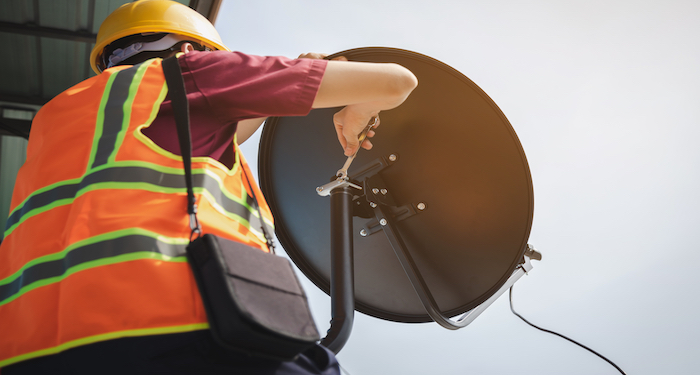
On the day of your setup, your engineer will show up at your home inside the time frame you specified, though the installation may take longer. A standard installation usually takes less than an hour, and a replacement usually takes 30 – 45 minutes.
When the engineer arrives, they will discuss with you or the adult you’ve designated to be present during the appointment the best spot for your satellite dish as well as the best path for the cables leading from the dish to your Sky box.
Because the dish will be installed outside your home, a few cablings will be attached to the outside, and holes will be drilled to allow the cables to pass through the wall and then into your home. Internal cables are commonly nailed to the skirting board.
Following the installation of your equipment, the engineer will give you a brief demonstration of how to use your box and view programmes. You’ll be able to watch Sky TV on the same day as your installation.
The duration to install a newly installed aerial is determined by the following factors:
- Your current location
- Pole length is required
- If there is a need for new cables within the home
- Whether or not a splitter or amplifier is required
- Expect to pay more for an aerial installation if you have a very high roof and difficult access to the roof
- If your installer is a highly qualified professional or a someone charging a pittance for subpar work!
- If you already have an aerial and an internal cable with a TV point, this job will be much easier
The table below will show the duration of installing a satellite dish:
| Installation | Duration |
|---|---|
| Satellite dish | 1 hour |
| Replacement | 30 – 45 minutes |
Types of Satellite Dishes
If you are considering having a satellite dish installed or want to learn more about the different types of satellite dishes, the differences between them, and which one you should get. Here we will go over the various types of satellite dishes and their advantages and drawbacks!
Satellite dishes can be made of a variety of materials, each with its own set of advantages and disadvantages. When referring to a material which the satellite dish is made of, it is generally referring to what the main curved reflector is made of.
However, other parts such as bolts, screws, and the LNB holder, are frequently made of something else. For example, the clamping as well as fixing parts on a fibreglass dish are typically made of aluminium or a similar material.
Steel Dishes
Steel is the most used material for satellite dishes. This is almost always painted steel. Steel dishes have the advantage of being both strong and inexpensive to purchase.
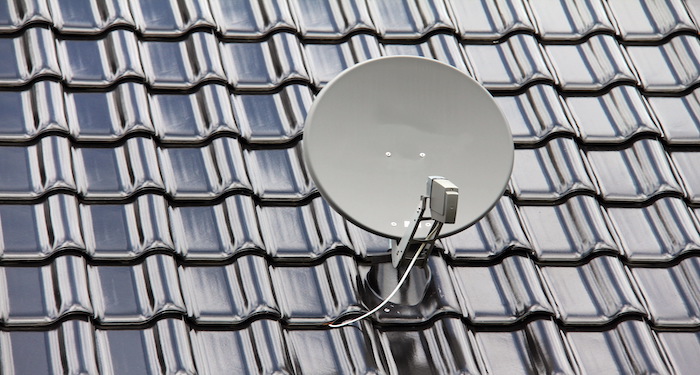
The main disadvantage of coloured steel dish antennas is that they rust easily, resulting in a shorter expected dish lifespan and the possibility of rust stains on your wall.
They are also inappropriate for seaside or marine environments, where they will not last long. You might even want to keep in mind painting the dish to keep the rust at bay and extend its life.
Pros
- Strong
- Affordable
Cons
- Can rust
- If not maintained, they are not durable
Aluminium Dish
An aluminium dish would be the next option you might consider. These are typically more expensive than steel dishes, so your satellite dish installation will be more expensive.
Many people believe that aluminium does not rust, which is technically correct because rust is a form of corrosion unique to iron/steel, but aluminium does oxidise.
This is not a problem because it will eventually protect the underpinning metal. Aluminium is also very light in weight, which may make a difficult installation high up a ladder or on a roof easier.
Pros
- Light in weight
- Do not rust as much as steel
Cons
- Expensive
Fibreglass Dish
Fibreglass is a plastic fibre-reinforced fabric. The primary benefit of a fibreglass satellite dish is that it is not made of metal or corrosive material, so you don't have to worry about rust or other types of weathering, making them the ideal choice for beachside installations and installations in marine environments.
The most significant disadvantage of fibreglass dishes is their high cost when compared to other types.
Another disadvantage of fibreglass is that it is typically not as strong as steel; however, this is not an issue with satellite antennas because once installed, they are rarely touched again, except by high winds.
Pros
- Does not rust
- Good for bad weather
Cons
- Expensive
- Not as strong as steel
Offset Satellite Dish
Offset satellite dishes are by far the most common here in the UK. When looking at the satellite dish, offset satellite dishes don't really appear to be pointing up at the Sky.
This is due to the LNB feed arm and LNB being positioned to one side of the parabolic reflector and the signals being reflected in the offset position.
This is generally around a 20-degree offset, but it varies depending on the manufacturer because the LNB and feed arm are not directly in the path of the parabolic reflector, as is the case with a prime focus dish, those who do not block or impede the signal in any way, allowing you to use a smaller dish size.
When someone has tried their tv satellite dish alignment using something like the Dishpointer App, the dish is often angled up to the satellites with no regard for the offset angle. In general, offset dishes are better suited for wall mounting than prime focus dishes.
When aligning offset dishes for some of the satellites at the horizon's lowest point. The dish antenna, like Turksat, can appear to be angled slightly downward and pointing to the floor.
Pros
- Can use a smaller dish size
Cons
- None
Solid Dishes
When comparing satellite dishes, the term "solid" refers to the parabolic reflector. It means that there are no holes in it, as opposed to mesh/perforated satellite dishes.
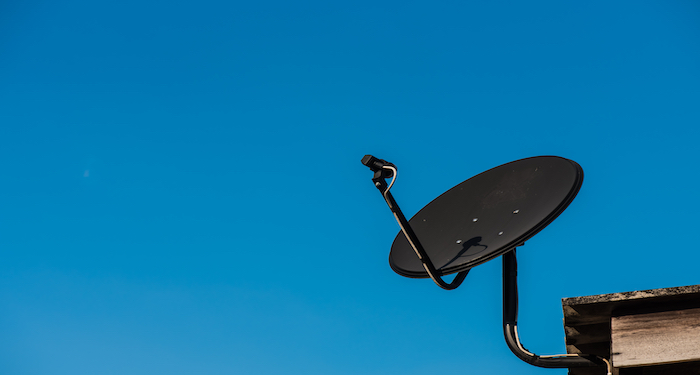
Solid satellite dishes are the most common and, in general, much better for seaside and marine environments because rainwater and moisture have fewer places to enter and rust/corrode the metal.
Solid dishes are often more popular and better suited to the higher frequencies in use by satellite television and satellite broadband services.
Pros
- Popular in the UK
- Good for bad weather
Cons
- No holes in it
How Much Does It Cost to Remove a Satellite Dish?
Now that more and more homes have access to cable TV or new services offering TV through your broadband, such as Sky's new plans that will see the newest SKY Q TV service made available to people without the need for a satellite dish in late 2018, there is and will be an increase in the number of new aerials, satellite dishes, and unsightly wires that create an unnecessary eyesore on the house's exterior.
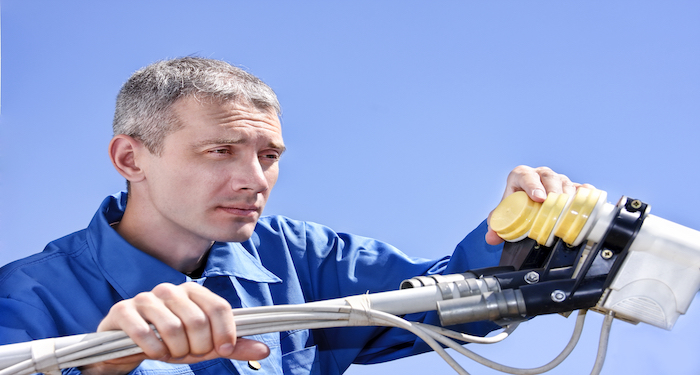
Most importantly, there is the risk of damaging your own or a neighbour’s property as well as injuring someone as it falls to the ground following a storm. Corrosion can occur on steel poles, wires, and fittings over time, posing a safety risk in high windstorms.
In wet conditions, if your TV antenna falls during a storm, your roof tiles may crack, causing significant damage to your home. Because of the amount of salt air in coastal areas, corrosion can be a major concern for homeowners.
You can expect to pay between £50 and £100 to remove a TV aerial. However, the exact cost of removing a TV aerial will be determined by several factors, including:
- What kind of aerial do you have
- It doesn't matter if it's indoors or outside
- How simple it is to gain access to your roof
- Your current location
If you need a TV aerial, this could make more sense to replace it with a like-for-like model rather than wanting to get rid of it entirely. The cost varies depending on whether your aerial is on your roof or even in your loft, but a resembling replacement may end up being less expensive than removing your old aerial entirely.
However, you must also think about the cost of your fresh aerial, which can range from £15 to £50 depending on what type. Typically, the entire job will take only a couple of hours.
FAQs
Q: How do you connect a satellite dish to a TV?
A: Connect one end of the coax cable to the "LNB" connector on the rear end of your satellite dish. Connect one end of the coax cable to your satellite receiver's "Sat in" port. Connect one end of the HDMI port to the 'output' port on the satellite's back.
Q: Can I install a satellite dish myself?
A: If you have Dish, AT&T, or cable and want to get satellite service for your home, you shouldn't need to hire a professional installer. You can install a satellite dish even if you don't have much construction experience. Once you've determined the best location for your dish, secure it in place.
Q: What way should a satellite dish face?
A: The location of the satellite transmitting the signal is referred to as the horizontal alignment. As a result, your dish must face either east or west, depending on which direction you want to receive the signal.
Q: What does LNB stand for?
A: The satellite dish is made of metal. The only electronic components are found in the front of the metal arm. It's commonly known as an LNB or LNBF, which stands for Low-Noise block downconverter.
Q: Who is responsible for removing the satellite dish?
A: The tenant is responsible for removing the satellite dish; however, you must get it in writing. Unless your rental agreement states that the tenant is directly responsible for removal, the responsibility falls to the property owner or manager.
Q: What is a portable satellite dish?
A: A portable satellite dish is one that can be moved with you from place to place. This is very beneficial for people who own touring caravans and motorhomes as they are small and compact and give you the opportunity to get TV while on the go.
Sources
- https://www.smartaerials.co.uk/blog/how-much-does-a-satellite-dish-installation-cost
- https://gradedtradesmen.co.uk/price/how-much-does-satellite-dish-installation-cost
- https://www.assistall.co.uk/tv-aerial-installation/
- http://www.aerialconcept.co.uk/costs-prices/satellite-sky-installations-costs
- http://homehelphub.com/Product/Sky-What-happens-on-the-day-of-your-Sky-TV-installation/2614
- https://www.smartaerials.co.uk/blog/satellite-dishes-explained-parts-types

